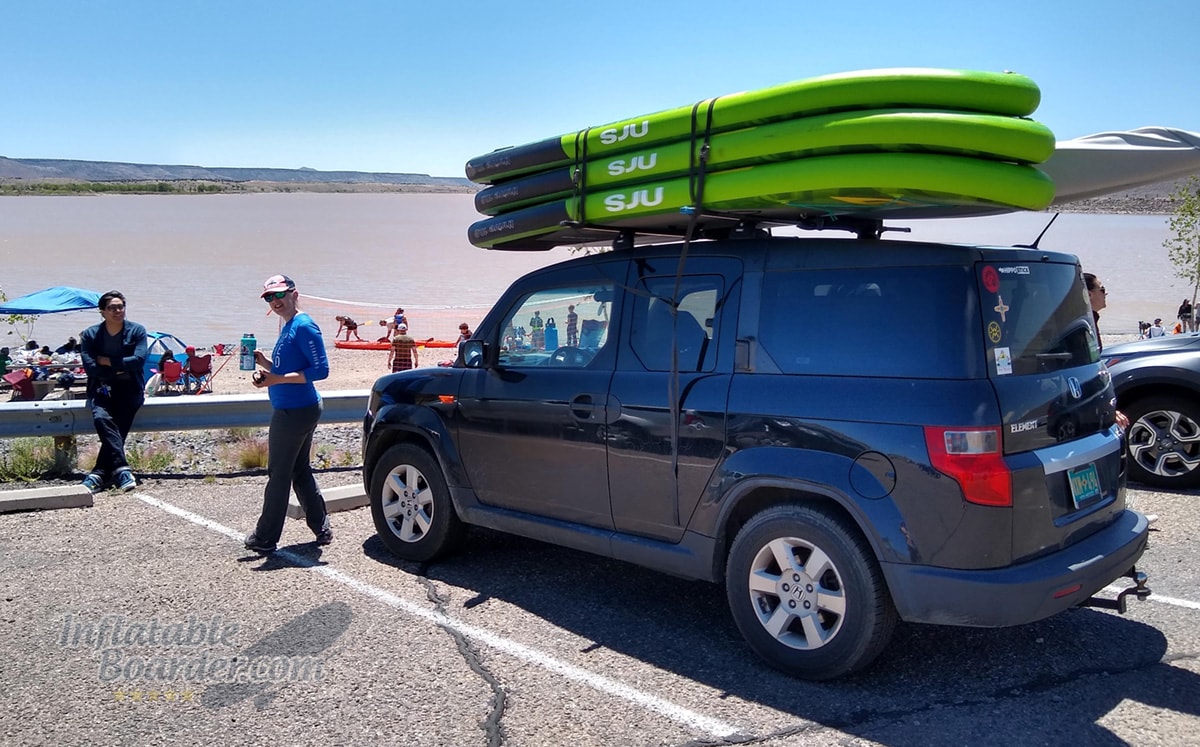
Hard paddle boards must be transported on the roof of your car, but inflatables have the advantage of packing into small bags to easily go from location to location. Sometimes, though, You just want to leave your board inflated between trips. In those cases you can safely transport your iSUP on top of your car, with a few caveats.
Check Your Warranty
While it shouldn’t be an issue at all, some companies will void their warranty for damage from rooftopping, or driving with your iSUP on the roof of your car. We regularly transport iSUPs on our vehicles with no issues, but extended trips could potentially cause problems depending on how the iSUPs are secured.
Think About Your Distances
If you are driving down the street with your iSUP, it’s not really a problem. But if you are planning a long road trip, rooftopping your iSUP probably isn’t the best solution. Long drive times at high speeds are more likely to cause issues from vibration/rubbing or structural problems. For trips with more than 20-30 minutes of highway driving I do recommend deflating your boards and transporting them in your vehicle rather than on your car’s roof.
How to Carry Your iSUP on Your Car
In the US, and my guess would be in most other places as well, you are responsible for anything that becomes detached from your vehicle. A loose paddle board could cause a serious accident if it comes off your car, so always double check before you start driving.
Pressure
For short drives you can leave your board at full pressure. However, long drives (especially in hot climates) may heat up your board and cause the pressure to increase. For drives more than 15 minutes I recommend reducing the pressure in your board to 2-3 PSI under the maximum rating. Then top the board off when you get to your destination.
Do not greatly deflate your iSUP before driving with it on your car. The air pressure inside the board is what gives it rigidity. If you deflate your board too much it will flop and fold in the wind. This can cause extra rubbing at the tie down points, pinching, and potential damage to your vehicle from impacts.
Mounting to Your Car
There are multiple ways to attach your board to your car. You can strap it directly to your roof, use a soft rack system or a hard rack system.
Mounting directly to your roof is simple, but risks more damage to both your vehicle (denting or scratching the roof) and to your iSUP from rubbing against the car. It’s not ideal to do this unless you absolutely have to.
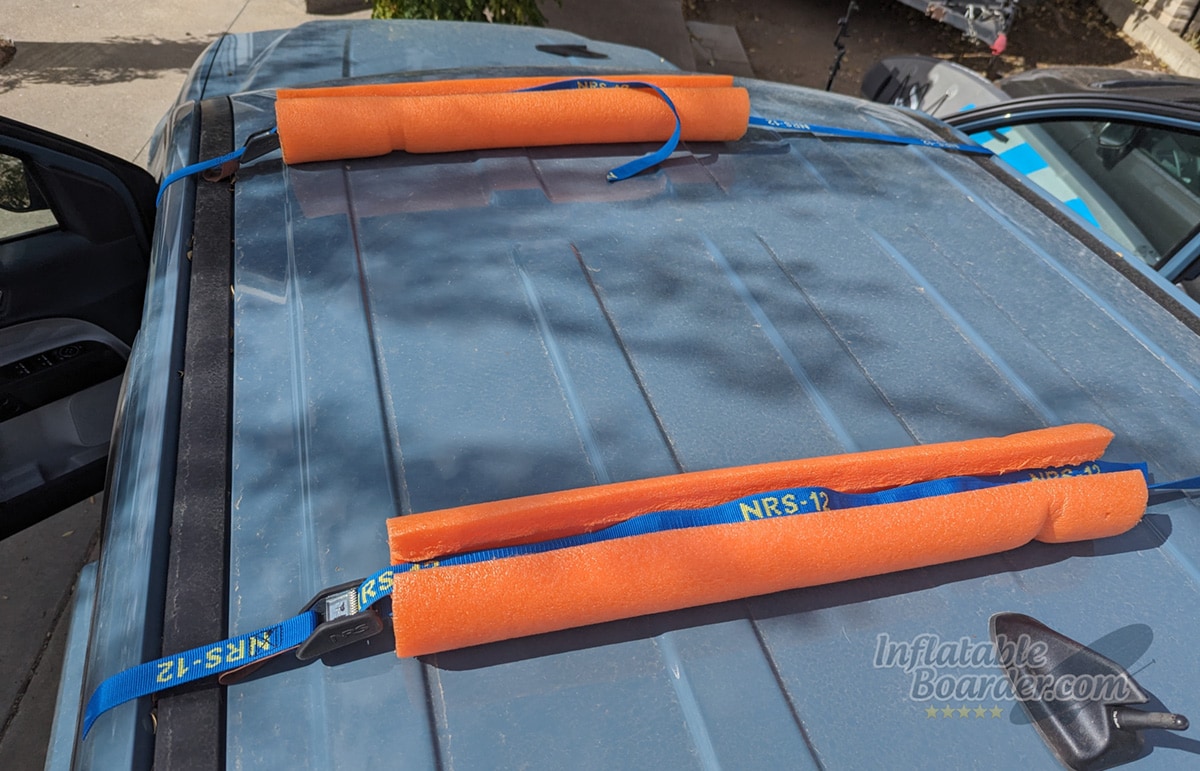
The next best thing to do is use a soft rack system. These are foam blocks, or even pool noodles, that are strapped to your vehicle’s roof. They provide a soft surface for both your roof and board. They do require to use twice as many straps, and typically a longer strap versus hard racks.
Hard racks mount directly to the roof of your vehicle, either through the gutter or frame clamps or mounted to bolted-on rails along the side of the roof. Hard racks eliminate needing to run any straps through the inside of your vehicle. You can also use them to mount SUP-specific carriers for quicker and more convenient carrying. While you don’t need SUP carriers, they do make things easier by eliminating additional straps.
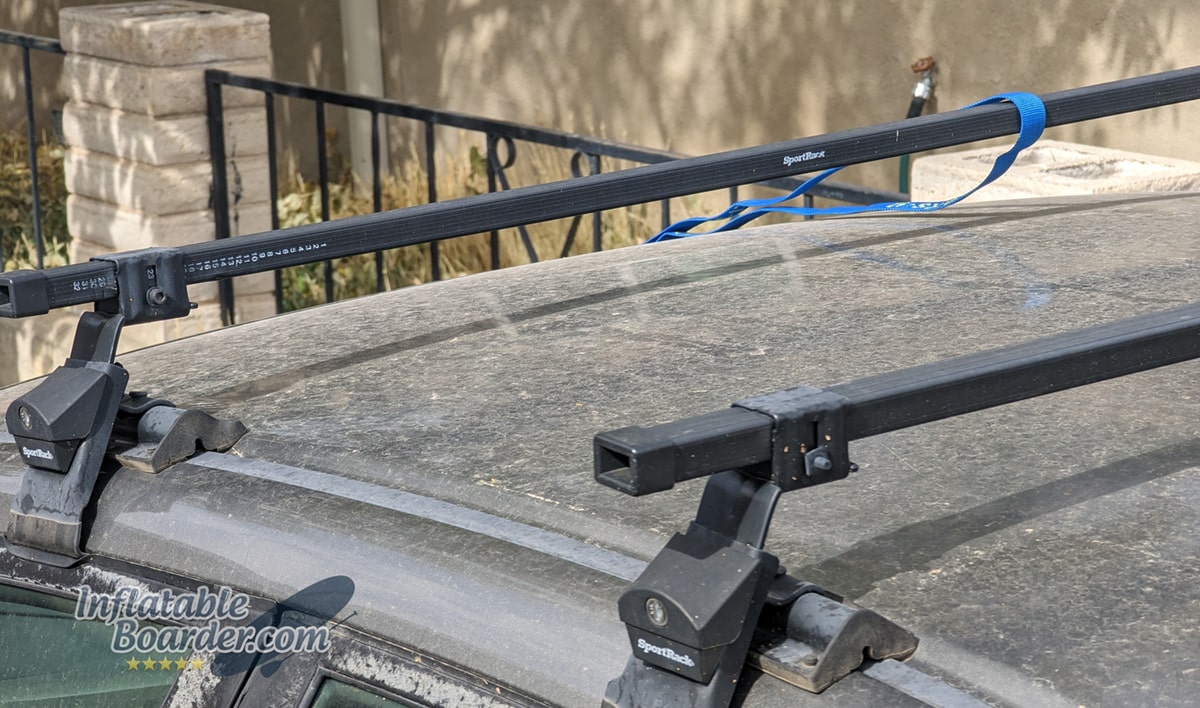
If you have the option to choose where to place your soft rack pads or hard rack crossbars, always opt to have them as far apart as possible (front to back on your car). The farther apart the pads or bars are, the more securely they will hold your board.
How to Tie Down Your SUP
First – never use ratchet straps or bungee cords. Ratchet straps use a lever to make it far too easy to apply far too much pressure to your board. You can damage the board, and even your vehicle, with ratchet straps. Bungee cords stretch which will loosen when driving over a bump or from air pressure which can cause your board to slip or the bungee cords to disconnect.
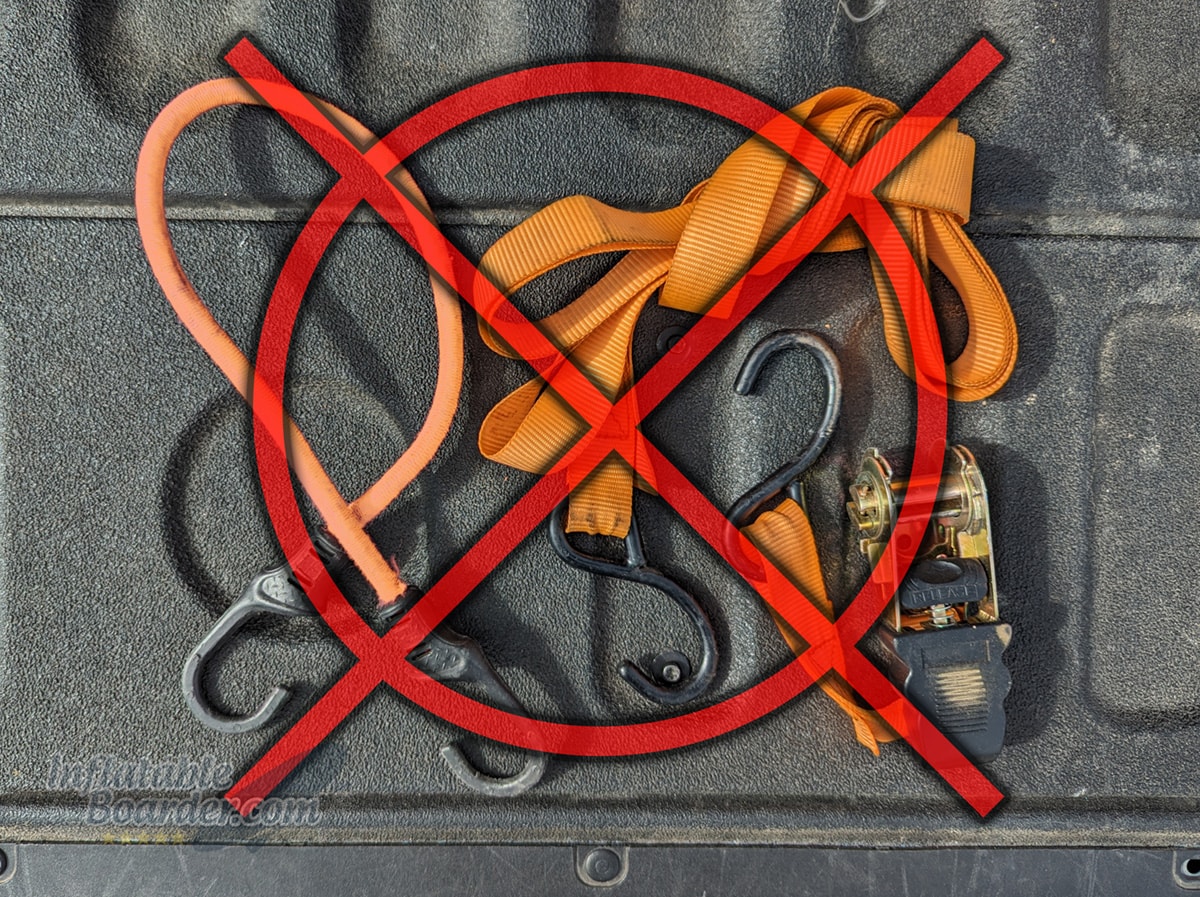
Instead, you should use cam straps. Cam straps still automatically hold the strap in place, but do not provide additional leverage that could potentially damage your board. You can use rope, but it requires another level of skill to properly tie your board in place with the appropriate knots.
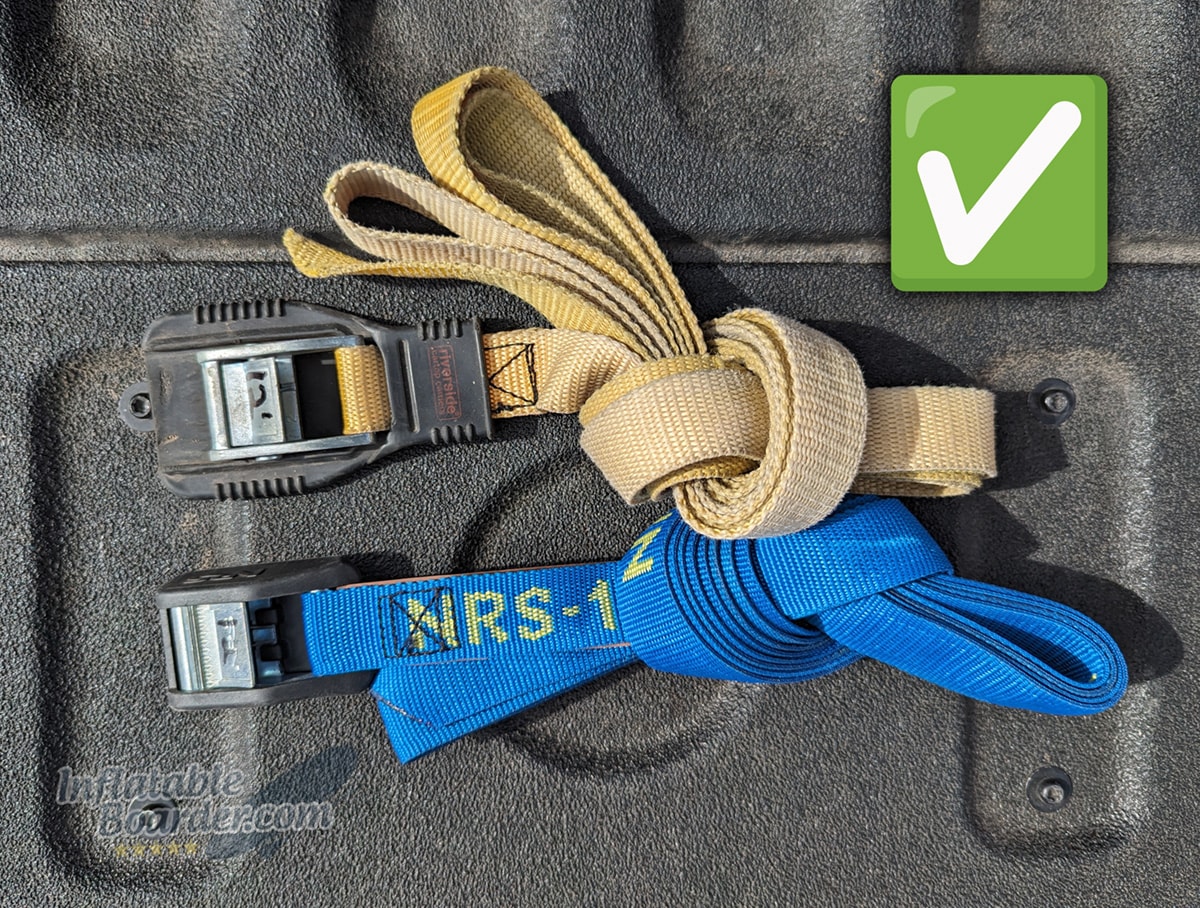
When tying directly to the roof or with soft straps, open all of the vehicle doors and attach the soft pads. Then place the board on top of the pads and loop a second set of straps over the board and through the vehicle. Tighten the straps down until they are snug and the board has no or very little movement.
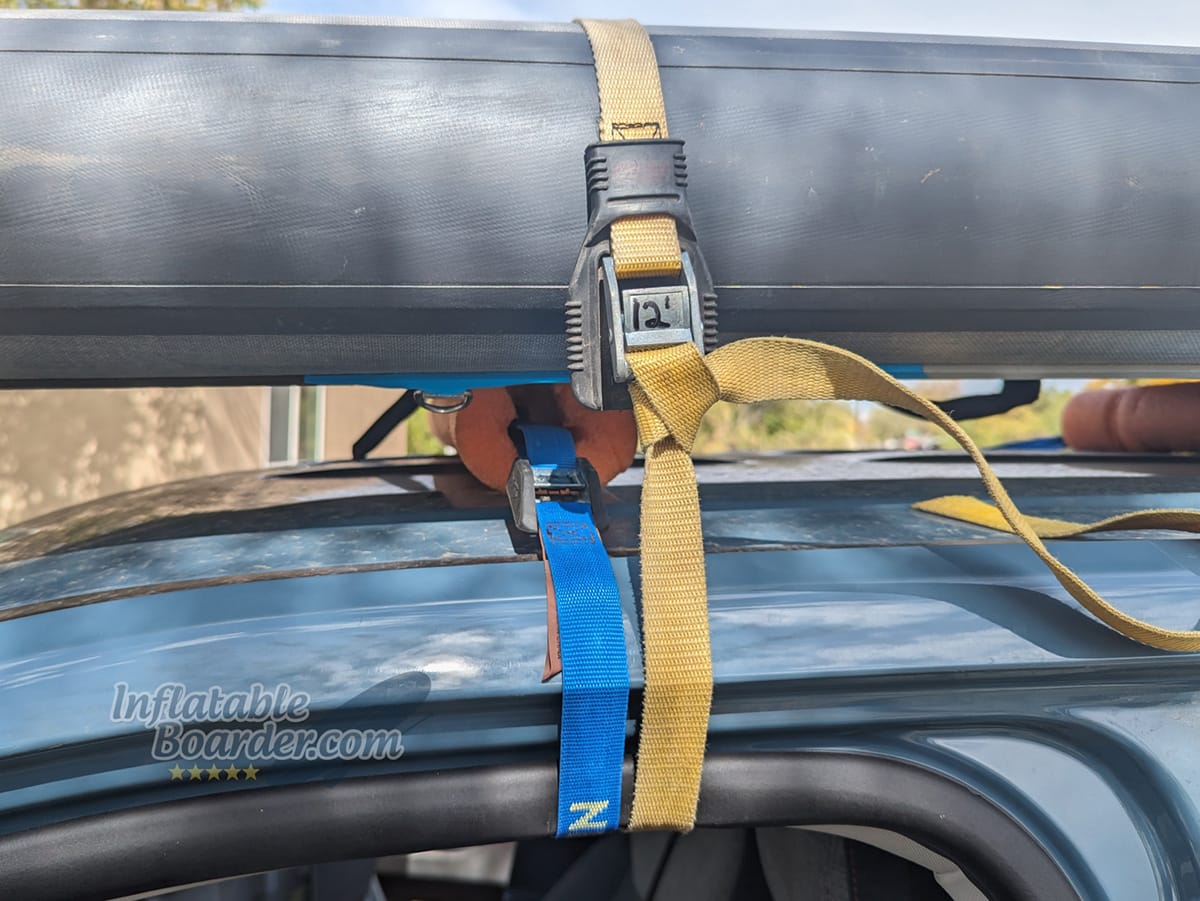
Because the straps wrap all the way around the roof of your vehicle it may not be possible to completely eliminate any wiggle or movement in the board. Soft racks are best used for only very short distance trips at slower speeds because of this.
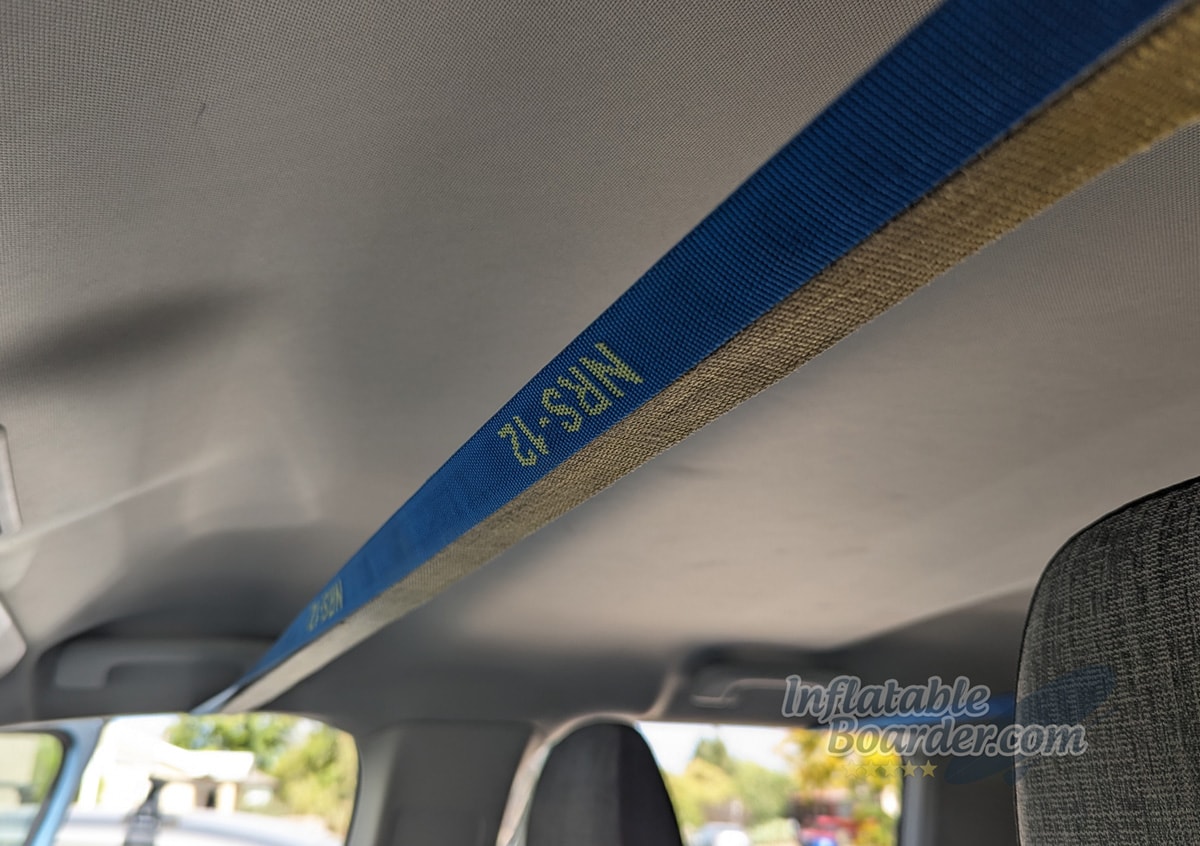
If you have a hard rack system, set the board onto the racks first (padding the racks with a pool noodle or bar wrap is a good idea to help protect the board). Then loop the straps under the crossbars on one side of the board, drape them over the board, and then loop them under the cross bars again. Tighten the straps down until snug and the board does not wiggle under the straps.
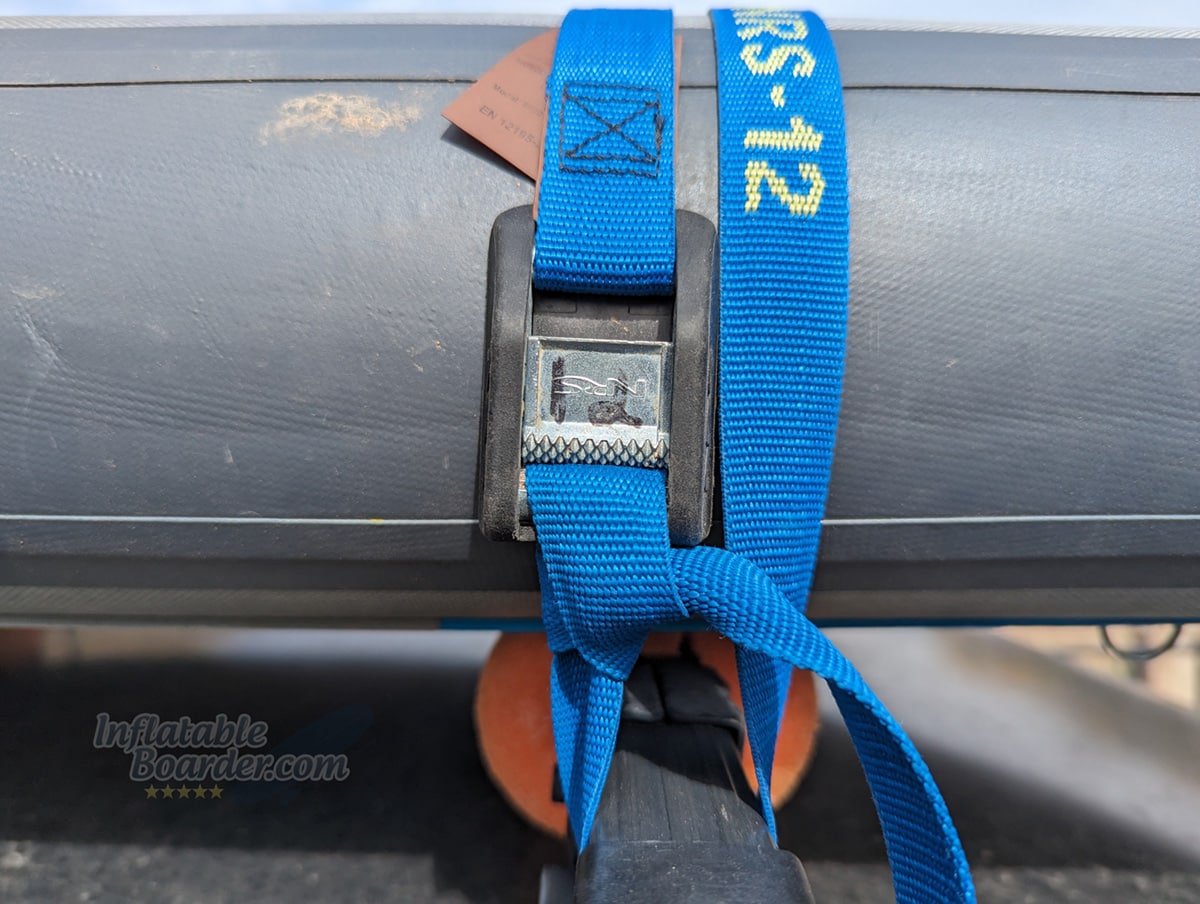
Whether you use a soft rack or hard rack, never cross the straps in an X-shape from front to back. Crossing the straps like this reduces their efficacy in holding your board in place. Always strap directly across the board.
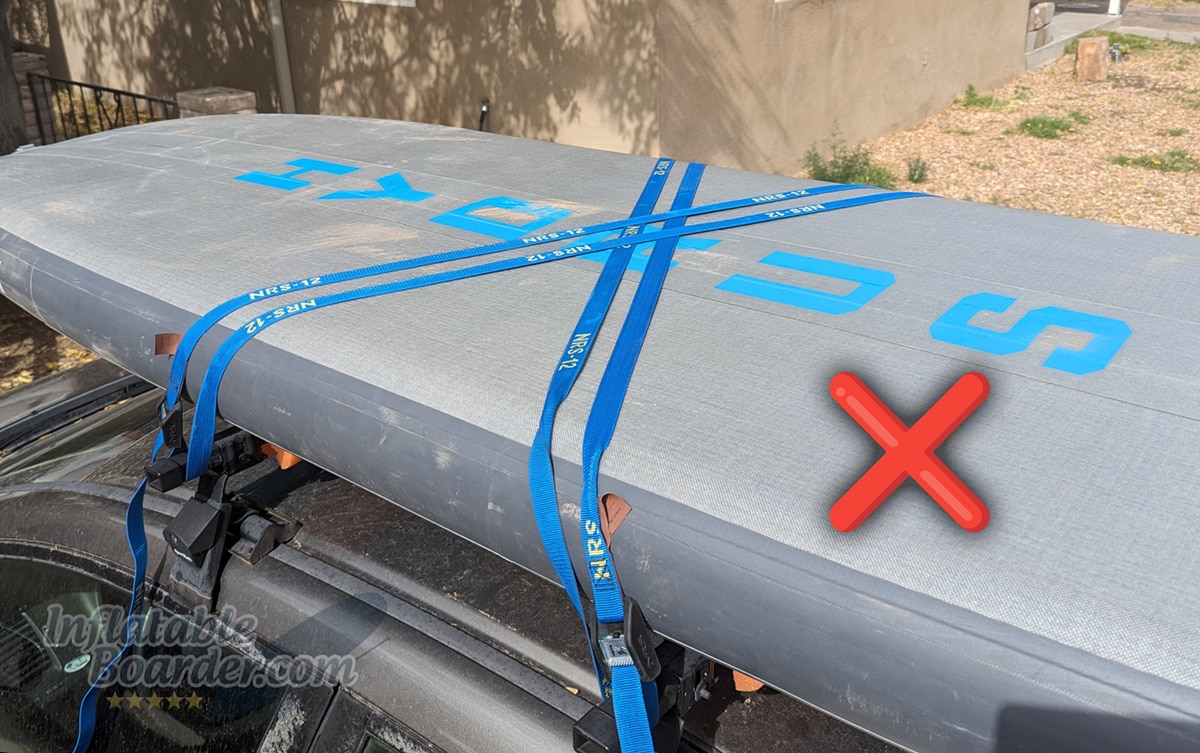
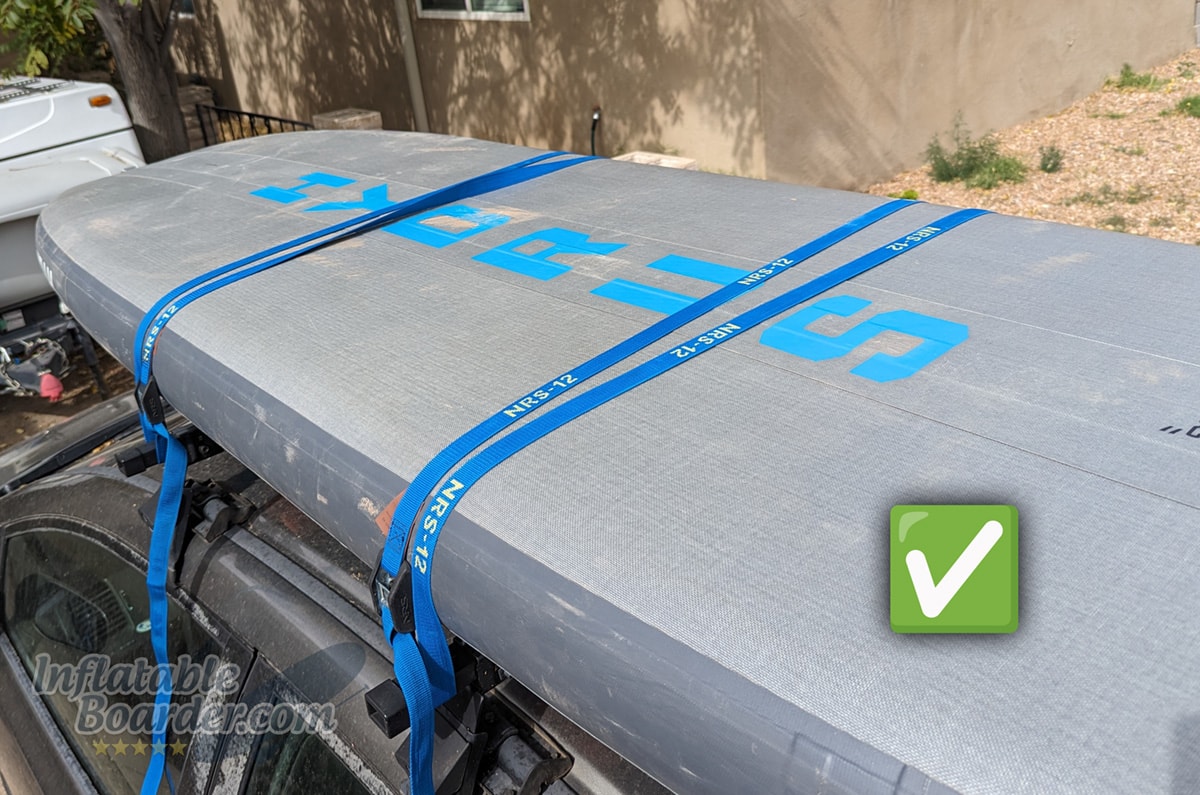
If you have a SUP carrier, follow the instructions for that specific device. Typically there will be a camming device housed inside the carrier to hold the integrated strap. Some models, like the Thule SUP Taxi, have a “garage” for excess strap and a built in steel cable and locking mechanism.
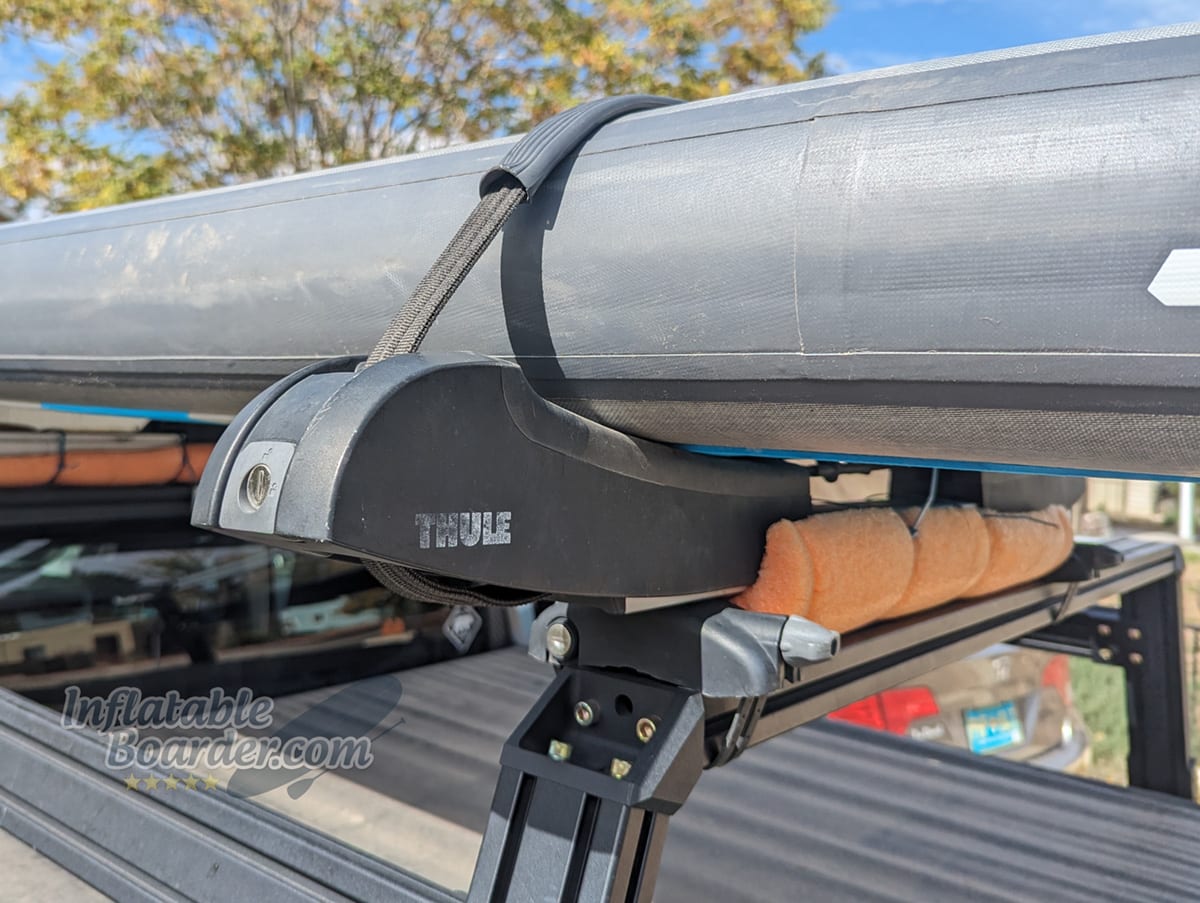
Forward, Backward, Upside Down?
There’s no debate more hot in the SUP (and surf) world than which direction your board should point while it’s on your car.
Some will say that your board should be backward and upside down with the fin in the board. That way if your straps loosen and the board begins to slide, the fin will catch on the straps. But that only works in one direction! Also, your straps shouldn’t be that loose! Even after four hours of driving at 75 MPH with a 14’ SUP on a roof rack, properly tightened cam straps don’t loosen up enough for any movement.
Well, then it should be upside down and forward, that way the nose rocker of the board looks like it’s in a more aerodynamic shape! Well, just because something is curved doesn’t mean it’s any more aerodynamic. After driving with boards forward both right side up and upside down I didn’t notice any change in fuel efficiency or driving comfort.
I guess that leaves right side up and backward as the final option. Honestly I’ve never done this and haven’t seen anyone carry their boards this way. Maybe it’s the one orientation we can all get behind and agree is just the silliest!
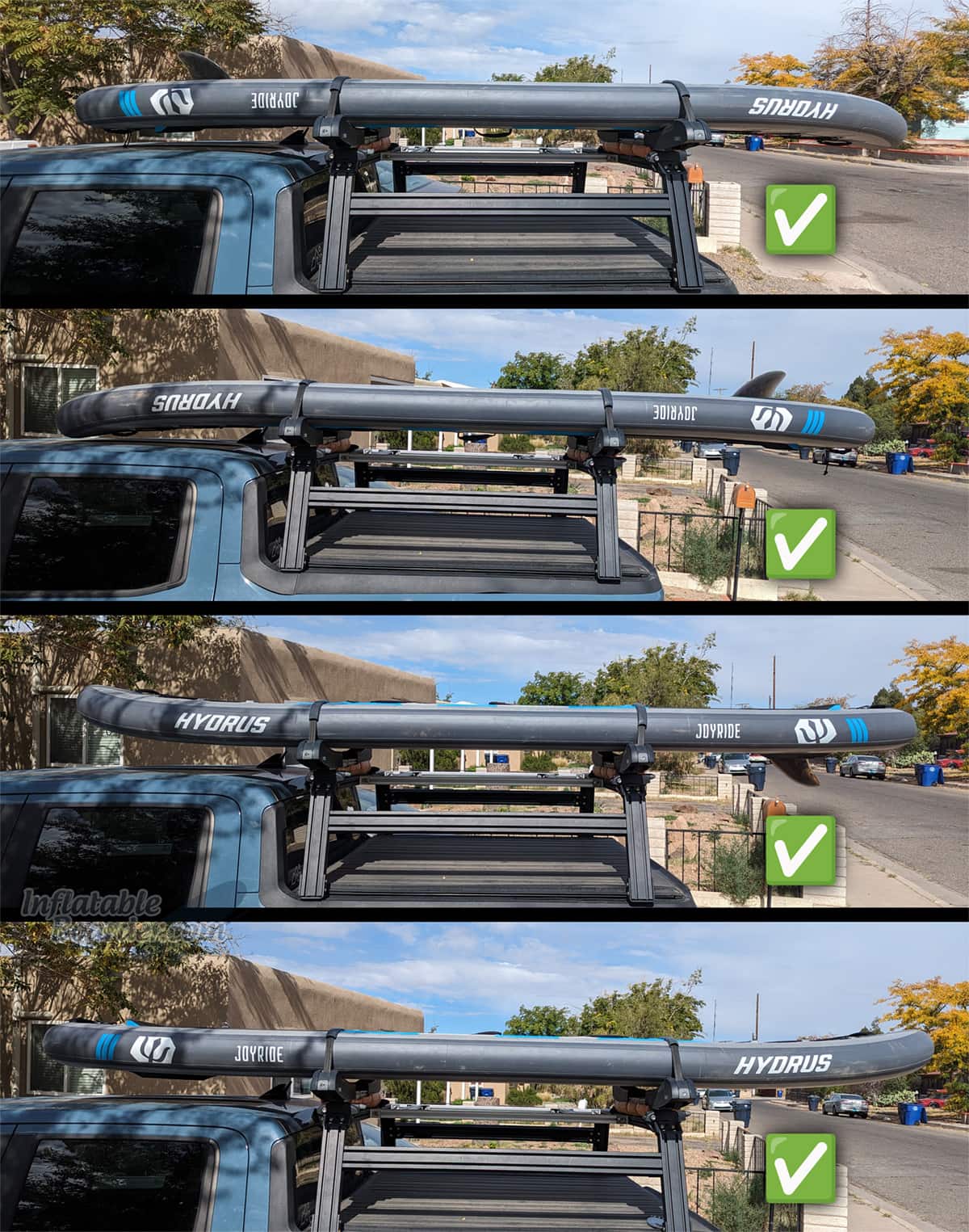
The truth is, it doesn’t matter how the boards are oriented on your vehicle. The only thing that matters is that they are properly secured.
But, you should always evenly distribute your SUP on your rack. You don’t want too much of the board hanging off the front or back. This unsupported length is more prone to bending and flopping. Plus, if too much of the board is hanging off the back of your vehicle, you may have to take additional measures to legally haul with excess length behind you.
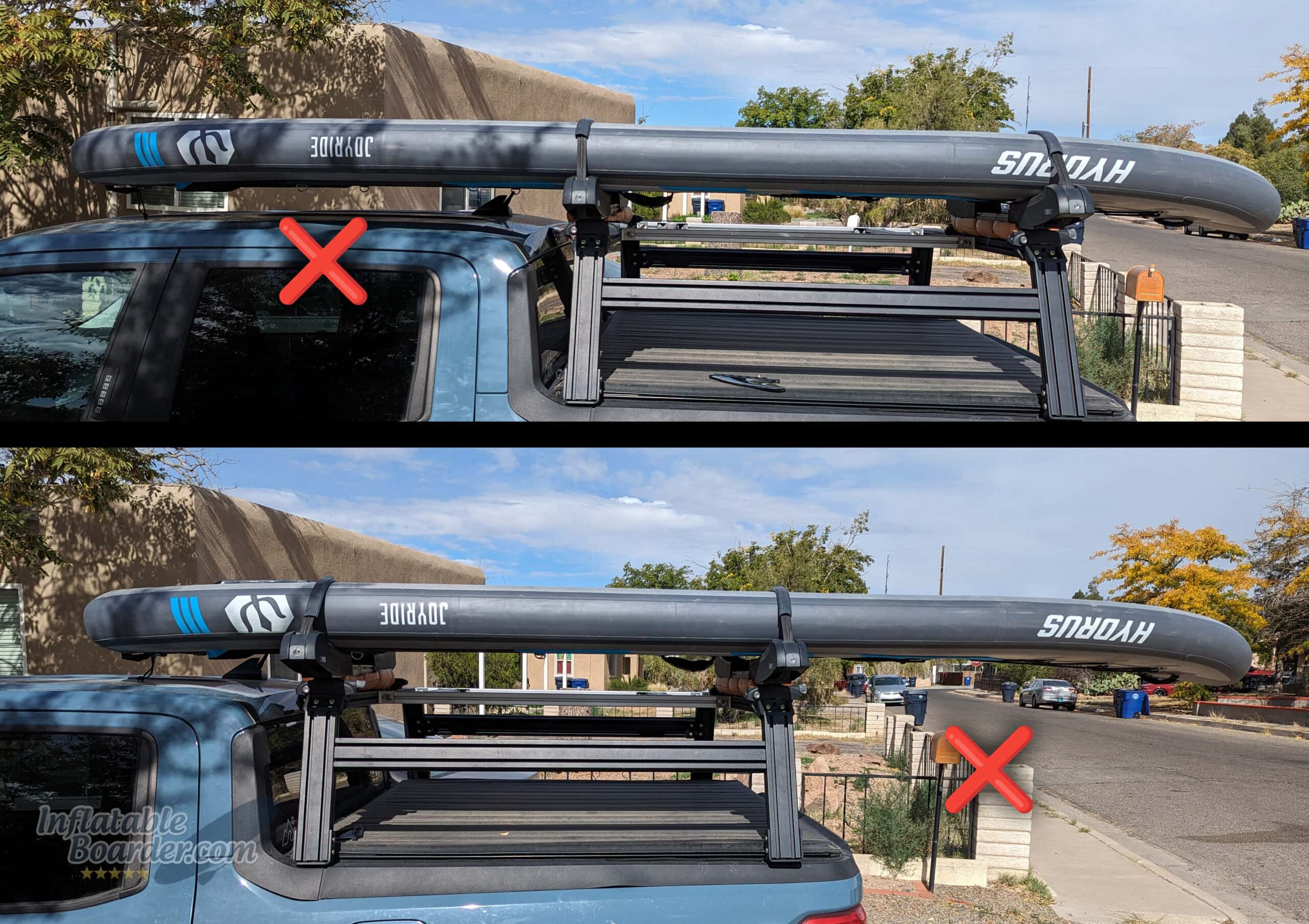
Lock It Down and Cover It Up
I don’t recommend leaving your iSUP on the roof of your car for extended periods of time, but if you do need to leave your SUP unattended for a bit I recommend using a cable lock going through your SUP’s handle and the car’s cross bars to secure it. While it won’t stop a determined thief, it will make it less of an easy target.
For longer trips or longer times out in the sun, I also recommend a board sock or board bag. These covers will either stretch or zip around your board and protect it from UV radiation and potential damage from things like rocks that may hit the board. It also helps keep your board clean from bugs and dirt while driving. Just make sure to put the cover, sock, or bag on the board before you tie the board down, or it may not be covering your board for long.
Final Thoughts on Rooftopping Your iSUP
No matter how you choose to place your paddle board(s) on your vehicle, the most important thing is that they are secured properly. Make sure to check your manufacturer’s warranty to see if car-top transportation voids the warranty, and use good judgment in deciding when to rooftop and when to deflate and pack your iSUP away for a drive.
